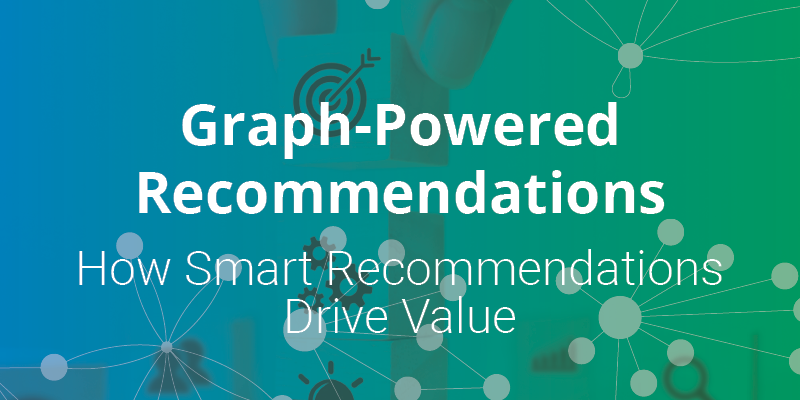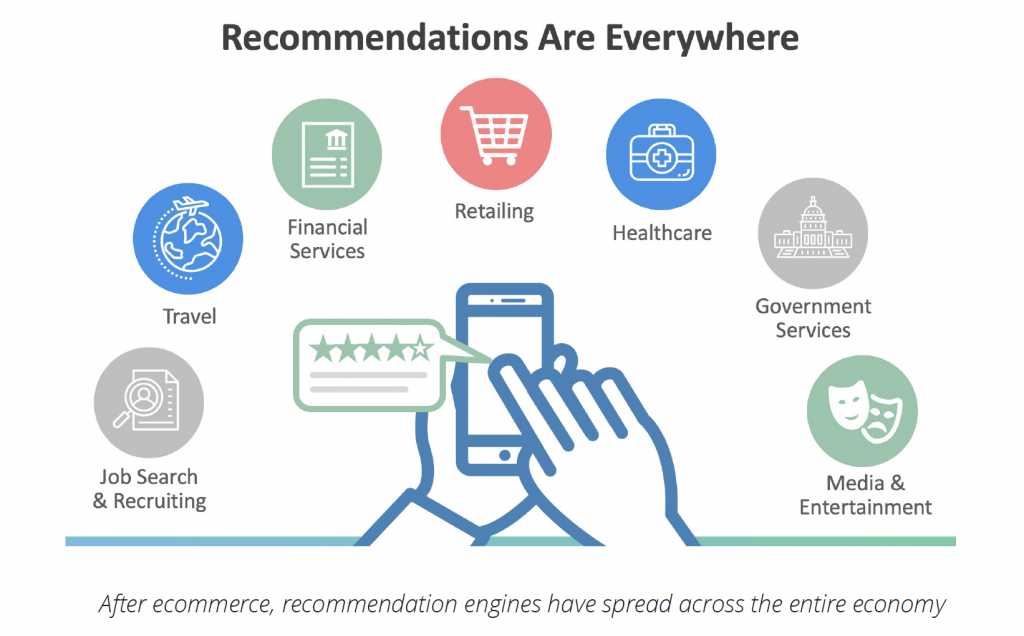Graph-Powered Recommendations: How Smart Recommendations Drive Value

Senior Director of Global Solutions, Neo4j
2 min read

Recommendation engines have become a crucial component of modern sales, finance, logistics and human resources applications. This core need has triggered a shift from relational and big-data approaches to graph-based technologies that are purpose-built to handle the rigorous demands of real-time recommendations.
This week we begin our five-part series on graph-powered recommendation engines, where we explore what underlies recommendations: the power of suggestion. Recommendations are often associated with retail, but recommendation engines have applications across industries, personas and contexts.
In subsequent weeks, we will look at why graph technology is superior for modern recommendations and how you can get started quickly with the Neo4j Intelligent Recommendations Framework.
The Power of Suggestion
In an increasingly competitive world, enterprises across the globe must differentiate their brands and streamline their business operations. But evaluating the overwhelming amount of information impacting each and every decision is an expensive, time-consuming and error-prone endeavor.
As a result, leading enterprises are turning to artificial intelligence (AI) and machine learning (ML) to make better decisions that improve enterprise efficiency and put real distance on competitors. At the core of this revolution is a shift from simple self-service to a more sophisticated approach – from the convenience of selection to the power of suggestion.
Recommendations Are Everywhere
As enterprises modernize their internal and customer-facing systems, they’re building smart, instant recommendations that:
- Personalize user experiences to improve customer loyalty
- Help staff to make effective and impactful decisions
- Drive efficiency across enterprise workflows
- Increase revenues and eliminate costs
Recommendations give users a personalized experience that:
- Supports the context and objectives of their current workflow
- Takes non-linear paths through an application to suggest products or choices
- Enforces enterprise strategies for each persona and context
Personalized and situational recommendations are used today in a wide spectrum of consumer and business applications including ecommerce, social networks, travel, entertainment, financial services, logistics, manufacturing, marketing, customer success and human resources.
What has ignited this explosion in the use of recommendations engines? Two factors:
- The sheer volume of data being collected from user visits and internal operations
- Modern technologies – specifically graph, AI and ML advancements – that discover and exploit otherwise-hidden data relationships
Recommendations Add High Value
Everyone is familiar with ecommerce recommendations that answer questions such as:
- Who else is similar to the current user and what have they purchased?
- Which products or services are most like the one the customer is currently viewing?
- Which overstock and promotional products are most appropriate to suggest to the current user?
- Which songs, events or other media do similar users find most appealing?
However, recommendation engines also answer business questions such as:
- Which employees have skills and experience that match open job opportunities?
- Which financial services are most attractive to this type of customer?
- Which prices need to be adjusted to attract more customer interest, and by how much?
- Which factory-supplier combination can produce products cheaply and ship them to Malaysia in four weeks?
- Which freight couriers are most cost-effective and dependable at delivering to Arizona?
Conclusion
As we have shown, recommendations give users a personalized experience that takes non-linear paths through an application to suggest products or choices, supports the context and objectives of their current workflow and enforces enterprise strategies for each persona and context.
Join us next week for blog two in this five-part series, where we will explain why graph technology is superior for recommendations.
Using smart, personalized and real-time recommendation engines helps your entire enterprise – customers, employees, partners and more – make better decisions and reap higher revenues. Graph technology makes it all possible.Click below to get your copy of Graph-Powered Recommendation Engines.









